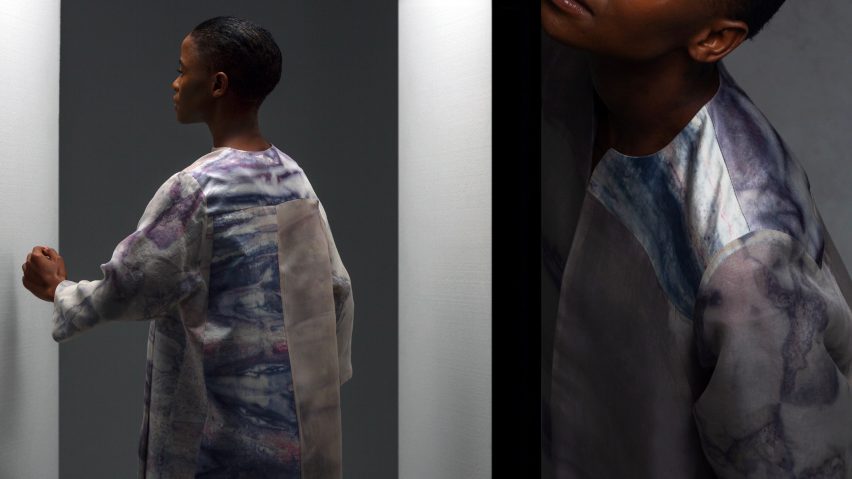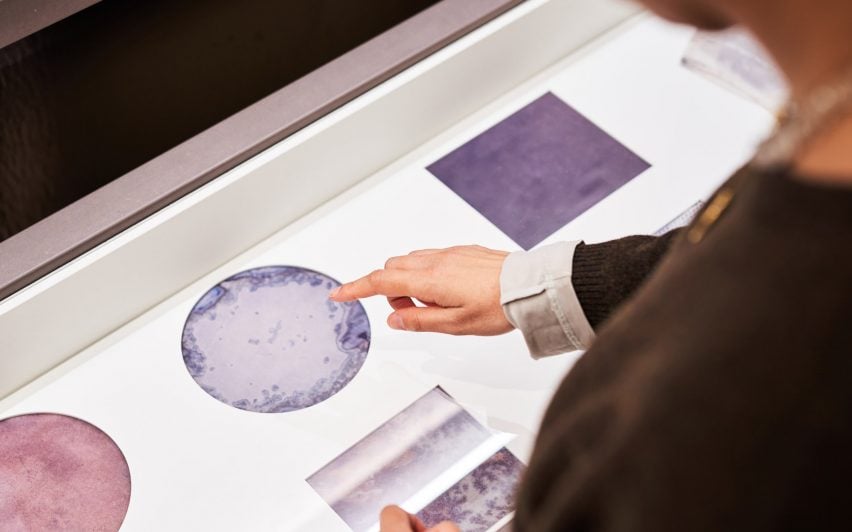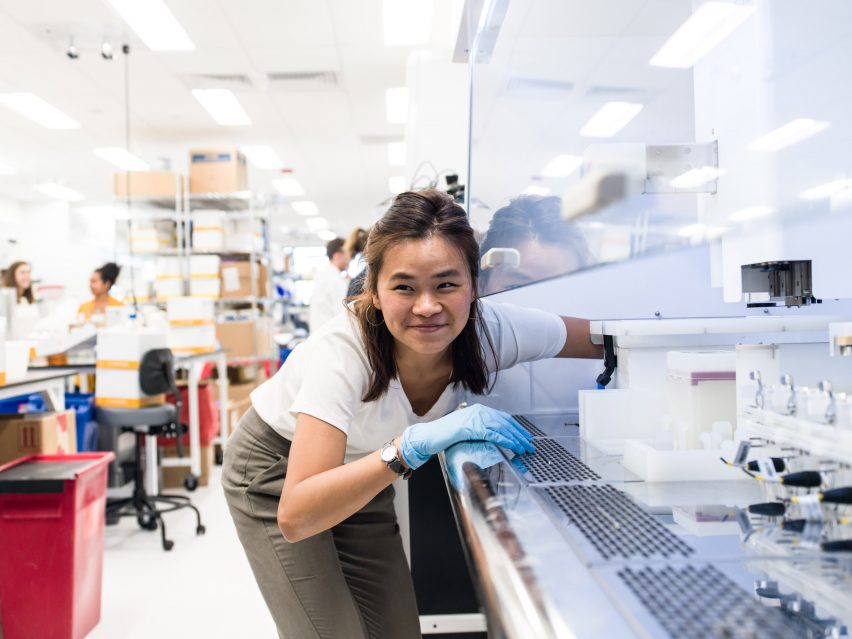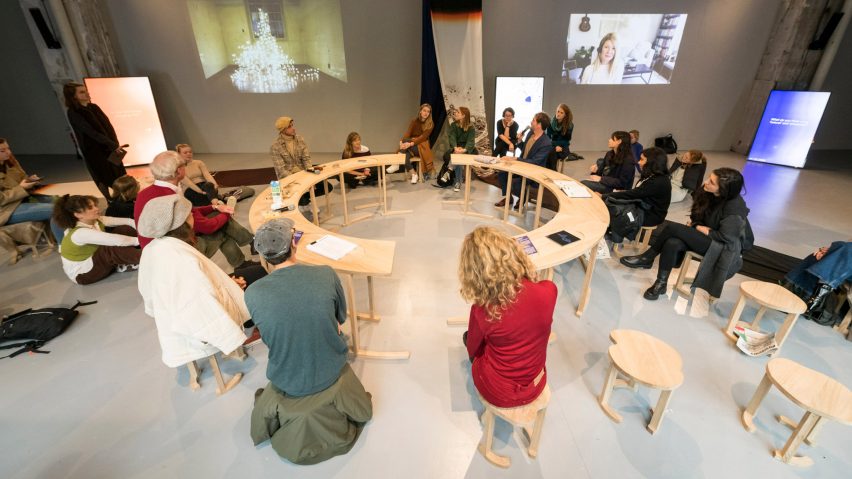
Biotechnology "offers us an exciting new toolbox to build the future" says Natsai Audrey Chieza
On day 12 of the Dezeen 15 digital festival, designer Natsai Audrey Chieza of Faber Futures sets out five principles for the emerging field of biodesign.
In her manifesto, Chieza explains how new biotechnologies, including synthetic biology, could transform the world – if we are careful.
"If we want a truly equitable future, we have to create the circumstances in which one can happen," she writes. "Inequality is a design choice. Design creates and perpetuates those systems. It can transform them, too."
Intro
Nature provides the starting point for re-envisioning design. It not only teaches us how closed-loop systems work but how no two systems are necessarily alike. It embeds lessons on reciprocity, regeneration, adaptation, transformation, and an instinct to provide care.
Faber Futures models design briefs on five principles for doing and nurturing opportunities to create transformative systems.
Five principles:
1. We act in defence of the world to come
Biotechnology is evolving rapidly, bringing new possibilities and promises of untold innovation. It offers us an exciting new toolbox to build the future but we have to use it responsibly. We are the ancestors and midwives of all life yet to be – human and non-human. Therefore we cannot think solely in the short term.
At Faber Futures, we take the long-term view, actively championing the security and sustainability of a world that does not yet exist.
1.1 There is a moral responsibility for biodesigners to be caretakers of the present and good ancestors to the future for both human and non-human life.
1.2 Designing individual products is short-term thinking. To fulfil our long-term obligations – to nurture and protect the wellbeing of the future world – we must design for systems.
1.3 Striving for equitable, environmentally responsible and socially beneficial futures places specific design demands on the development and deployment of synthetic biology and other emerging technologies.

2. We design for systemic change
Design is not only a framework for thinking, it is also a tool for doing. If we want a truly equitable future, we have to create the circumstances in which one can happen. At Faber Futures, we combine design methodology with biotechnology in order to address systemic inequity, end injustice, embed regenerative processes, and map our route out of systems based on exploitation.
2.1 The dominant global systems of today are built for extraction, consumption and the benefit of the few.
2.2 Inequality is a design choice. Design creates and perpetuates those systems. It can transform them, too.
2.3 By centring equity and care, instead of perpetual consumption and profit, biodesign can enable systems in which all can flourish.

3. We recognise a continuum of time and scale
Biodesign operates within a complex continuum of time and scale. Choices made in the present are influenced by those of the past and will influence the future. The impact of biodesign ripples from micro to macro and vice versa, often in ways we might not foresee. As designers operating at the dawn of synthetic biotechnology, we must take responsibility for embedding compassion at every point in this continuum.
3.1 Design interventions at the molecular or cellular level will ultimately impact the planetary one.
3.2 By recognising interconnectedness, we can develop an equilibrium in which people and planet thrive – a system rooted in diversity, reciprocity, communication and circularity at scale.
3.3 Strong social and ecological values are fundamental. Any system that does not have compassion and care at its heart will ultimately replicate the status quo.

4. We think beyond categories and conventions
Synthetic biology is a new world – it cannot be viewed through the lens of the old. The terminologies, categories and definitions of our existing systems have become limiting and exclusionary. As the boundaries between evolved and designed systems become less distinct, our language needs to shift to represent the intersectional, interconnected nature of our emerging technologies and communities. Expanded definitions, disciplinary cross-pollination and broad perspectives will be integral to the design of radical new biological systems that shape and sustain the world we want.
4.1 Language both describes and directs systems of thinking. Adapting, expanding and replacing outmoded definitions enables radical new possibilities for working with living systems to design solutions to the problems we face today.
4.2 Expanded definitions are the foundation of more open and inclusive new technologies and richer, more diverse networks.
4.3 Blending new technologies and diverse voices ensures that biotechnological evolution can be built on compassion and equity, rather than consumption and exploitation.

5. We pursue mutual benefit through collective effort
In any biological system, the whole can flourish only if every part thrives. Successful biodesign solutions must empower the many, not the few. From the microscopic level to the scale of the global community, we seek to co-design systems built on plural perspectives, collaborative approaches and collective efforts, which embrace a more-than-human worldview and create opportunities for all.
5.1 Monopolies create stagnation and inequality. Radical solutions can be found through multidisciplinary co-design and collective efforts. Plural visions and multidisciplinary collaborations produce more compassionate futures.
5.2 Biology is a complex matrix of interconnected and interdependent systems, a network of exchange that operates at every scale. If we adopt biology as a pathway to innovation, we have to shift the way we think about tech and design – from a proprietary framework to one built on shared resources, methodologies and ideas.
5.3 To ensure success, diversity must be entrenched in teams, ambitions, processes and perspectives.
Conclusion
Our principles learn from nature to model values-driven design. There is a story yet to be told about an alternative role design can play in our future. Now more than ever, when we think about what else design can do, and especially when those activities encompass the design of, with and from biology, we need to implement a new emphasis on interconnected systems.
This is an invitation to develop new models for design and therefore social structures that go beyond commodities and services for mass extraction and consumption. This deeply collaborative work takes many different kinds of actors, with different tools and knowledge, but all working towards the same goal: a fundamental shift for a future in which both people and planet can thrive.

Natsai Audrey Chieza is founder and CEO at Faber Futures, a design agency that explores the intersection between design and biotechnology. Her work focuses on biofabrication and examines how natural processes such as microbial action can be harnessed to create sustainable products.
Find out more about Natsai Audrey Chieza ›